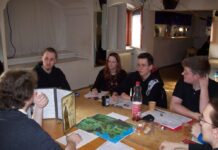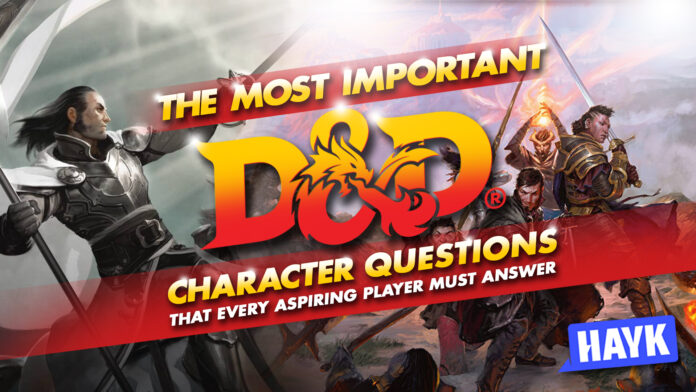
It’s easy to make a D&D character due to the Player’s Handbook’s step-by-step method and other online tips. However, making a great D&D character is a different puzzle. The process requires deep analysis and mechanical considerations.
In this article, we’ll help you make a dynamic character with the help of the most essential D&D character questions. Everything begins with either one question or more – you must answer them even before generating ability scores or even building your personality.
Contents of this Page
Most Popular Questions for D&D RPG Characters Explored
Why Do You Play D&D?
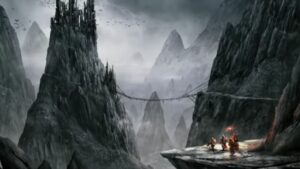
Knowing your reason for playing D&D is a great step that will help you become a better player and adventurer. Every reason is valid because D&D is a highly flexible game that accommodates the various preferences of many players. Plus, knowing your personal reason will help you push through a campaign’s slow moments. The reason will even prevent your D&D burnout!
It’s always beneficial to jot down your D&D reason in an organizer or a diary. Always read your personal reason like a mantra before a session. You don’t need to keep your reason overly long or complicated. Even a single sentence will do as long as it is clear and coherent.
How Experienced You Are in D&D?
D&D is similar to a creative profession – it unlocks bits of wisdom for all players from the character’s free open beta phase to how far you’ll take him or her. Understanding your D&D experience will allow you to make a competent character that can navigate through different layers of rules and context. Your DM will also inquire about your personal D&D experience for the sake of balance adjustments in the campaign.
There are numerous ways to determine your personal D&D experience. The fastest way is to count the number of campaigns or one-shots that you’ve attended. You don’t need to focus on completed campaigns alone because even unfinished ones will make a difference. If you’ve been into many campaigns, you’ll have a decent foreknowledge of general rules, character builds, homebrew options, and combat tactics.
Another useful method of analyzing your D&D experience is to make a full accounting of all characters that you’ve created. As you examine your previous characters, you will remember the traditional builds and class combinations. Maybe a past build can even influence your new character, leading to a unique concept.
If you’re a total RPG or D&D beginner, you shouldn’t worry too much about deep character builds or complicated options. But you should always ask for help or consult the DM regarding any option that you’re planning to have, regardless if you’re leaning towards a dragons character creation concept, an ogre, or straight up a human race.
What Are the Things You Want to Achieve in A Campaign?
Every player has different goals in D&D. Some players want to be a part of a big adventure, while others are just eager to test a new multiclass combination. On the other hand, action-oriented players prefer to kill monsters and hunt down evil overlords.
Knowing your goals in D&D is another way of staying motivated in a game. Consider your goals as part of a big checklist that your character must tick. After all, nearly everyone loves checklists!
Once you’ve reached a goal, do your best to document it. Make a blog about your character’s achievements, and share the adventuring story with others. As a D&D player, you’re already an artist with lots of creative options ready to be used.
These are some ways to document your character’s progress:
- A short story piece or a novella
- A blog post
- A video blog or a live streaming feed
- A specific form of art – particularly one that you’re trained with
- A custom social media page
- A souvenir box filled with custom stuff
- A custom painted miniature
Just remember that your character’s goals are different from yours. Your character would probably love to kill a regional warlord in the campaign or steal a mythical treasure from a forgotten temple.
What is Your Character’s Deepest Darkest Secret?
Every character has a deepest darkest secret. Creating this powerful secret is a fine way to make sure that your character is truly unique. Maybe your character is a Lich-in-the-making or a simpleton who knows the real formula to immortality. Or perhaps your character was born in the middle of a world humankind battlefield; anything goes, really.
Clinging on to the dark secret can be a plot point or your character’s burden. You mustn’t reveal the secret to other players because it will endanger the character’s life or goals. Keeping the secret hidden can be a great source of drama or pure tension.
Does Your Character Have A Bitter Nemesis, Perhaps a Family Rival?
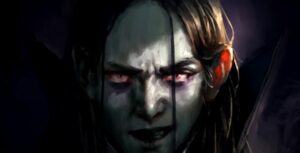
A nemesis can shape your character’s destiny in many ways. You can write down the nemesis as the culprit behind the character’s early troubles. DMs love characters with backstory villains because they can be connected to the overarching plot. This simply means less work for the already-hardworking Dungeon Master.
The nemesis can be one of the powerful lieutenants of the BBEG (Big Bad Evil Guy) or even a rival family. If the DM allows it, you can even consider the nemesis as the BBEG itself! To make the plot thread more dramatic, try to hide the identity of your backstory villain. Inform the DM about the development and gain approval fast.
How Do You Plan to Multiclass If Ever?
Multiclassing in D&D is complicated but it is the most effective way of making a unique character. With a multiclass character, you can explore lots of features and mechanical benefits at the expense of specialized power. Multiclassing also has specific requirements, and it is dependent on DM approval.
Some multiclass combinations are naturally stronger than others. A Paladin-Cleric, for example, has improved healing capabilities while maintaining a degree of relative combat prowess. You must also consider the subclasses of each chosen class.
To help you save time, you can review these popular multiclass combos:
- Paladin-Cleric (Tanky Healer)
- Paladin-Fighter (Martial Smiter)
- Paladinlock/Paladin-Warlock (Eldritch Smiter)
- Barbarian-Fighter (Martial Primal Rager)
- Barbarian-Paladin (Classic Tank)
- Bardbarian/Bard-Barbarian (Tanky Buffer)
- Bardlock/Bard-Warlock (Sinister Songcaster)
- Bard-Paladin (Buffer Healer)
- Warlock-Sorcerer (Improved Eldritch Caster)
- Sorcerer-Wizard (Improved Caster)
- Wizard-Rogue (Improved Arcane Trickster)
- Fighter-Rogue (Martial Sneaker)
- Rogue-Artificer (Sneaky Crafter)
- Ranger-Rogue-Monk (The Speedy)
Your multiclass options will even become more diverse if homebrew options are allowed by the DM. There are hundreds of homebrew options in the D&D sphere – from Unearthed Arcana to the personalized archives of dedicated players or DMs.
Does Your Character Build Rely on Homebrew Materials?
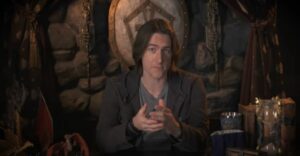
You probably need to rely on homebrew options if you have an ambitious character concept that’s not covered by official D&D materials. It’s easy to find a homebrew material since numerous free materials are available online. You can also buy some popular homebrew D&D books for greater quality and licensing.
Here are some communities where you can get homebrew options for free:
- D&DBeyond Forums
- Enworld Forums
- net
- GMBinder
- Obsidian Portal
- DandWiki
- The Homebrewery
- Unearthed Arcana Reddit (r/UnearthedArcana)
- DnD Homebrew Reddit (r/DnDHomebrew)
Before building a character that relies too much on homebrew, talk to your DM or review the campaign brief. The DM may or may not allow some homebrew options because of balancing and player management issues. But don’t throw away your concept! Build the concept during your free time and keep it in your D&D portfolio.
Understanding The Essential Pillars of A Great D&D Character
Every great or not-so-great D&D character is affected by a handful of aspects. By knowing and mastering these aspects, you’d be able to make a memorable character that deserves a spot in a DM’s hall of fame.
The Backstory Fuel
The backstory is the major foundation of any D&D character. It is the starting point of a character’s journey, driving all motivations, goals, and desires. You can consider the backstory as a primary template of your character.
Many things drive your character’s backstory. The first factor is your general worldview or your perception of the world. If you’ve had life-changing experiences, you will develop a strong worldview. Eventually, this will affect your character’s D&D backstory. Worldview is why many edgy characters are determined to change the fictional campaign world.
The second factor related to backstory creation is experimental curiosity. Somehow, this factor isn’t directly linked to worldview. Your rationale for the backstory is just the nature of trying out specific builds and character destinies. You’re also probably excited by the flow of the story and the way your character is connected to the world.
Some players also love to create character backstories for the sake of prose-writing. These players enjoy the process of writing, and they also get the excitement from testing out their characters. In D&D, one of the common tropes is a hardworking DM receiving a 20-page backstory from an excited player.
If you’re having a hard time making a backstory, you can follow these tips:
- Limit your backstory to less than five paragraphs
- Focus on your character’s goal or ambition
- Use D&D’s backgrounds to mold the backstory
- Use Ability Scores to justify your character’s backstory development
- Inject names and places – your DM will appreciate the effort
- Tie the backstory to the campaign world for easier DM approval
Always remember that an interesting backstory will shape the fate of your character. The backstory is the fuel, and the character is the engine.
Finding the Right Numbers
Numbers determine many things in D&D, such as ability checks, encounter rolls, damage, and general outcomes. During character creation, numbers also dominate through ability scores and modifiers.
Generating ability scores is a fun experience because of true randomness. You can get high scores for your character’s stats and get frustratingly low scores. The ability scores will represent your character’s competence level in almost anything. In most cases, ability scores support the backstory.
During Session Zero, the DM might let you reroll some or all scores. Don’t let go of this opportunity in order to get the right scores for your character. Choose some ‘dump stats’ that will represent your character’s weaknesses, and don’t forget to prioritize one or two abilities. You should also be mindful of your character’s ability scores if ever you’re planning to multiclass someday.
Here’s another golden tip: always set a character’s ability score to a divisible number. By doing so, you can take advantage of additional modifiers. Even if the score isn’t divisible at the beginning, make sure that you prioritize it once you’re ready to get an ASI (Ability Score Increase).
Over time, you might have a hard time tracking down all character modifiers. Your character sheet is useful, but it will fill up quicker than expected. Instead of relying on a plain sheet, you can just use index cards or handy post-it stickers.
The Necessity of Roleplay
Roleplay is the strong suit of D&D. In any D&D world, players have dozens of ways to approach a specific situation. A trapped group of adventurers, for example, can exhaust all possible options to attain their freedom. The options are mostly connected to skill checks, item usage, ingenious plans, and divine intervention. Every player action is accomplished through roleplay or interaction.
Understanding your character is one of the factors of great roleplay. You need to know how the character would react in a given situation. But knowing is just one part of the journey! You must deliver the character’s desires and motivations through moments of roleplay or social encounters.
Here are some character creation questions that will help you roleplay better:
- Is your character comfortable in social encounters?
- What are your character’s mannerisms, social tics, or unique habits?
- Does your character drink a lot in taverns?
- Do you prefer roleplay over combat? Why?
- Does your character have a helpful social feat or background?
- What is your character’s standing with the game’s factions?
- As a player, do you love theatrical improv?
- Is your character in good relations with everyone else? Is your character current relationship active?
- Do you want to achieve a certain goal through roleplaying?
Even if you’re not into full roleplaying, you should commit to it every once in a while. Who knows? Maybe the DM will reward your roleplay efforts with magic items or Inspiration! Wizards rejoice!
Combat As the Equalizer
Combat is one of the most exciting parts of D&D or any other TTRPG. Without combat, a campaign will go stale in less than five sessions. Even if the players love to roleplay and social encounters, they will look for combat encounters to test the strength of their characters. In this sense, you must consider D&D combat as an equalizer of a character’s development.
Even if your character build is not meant for combat, you should expect at least one encounter per session. You will face weak enemies during early levels that can be vanquished within a few rounds. These enemies are possibly goblins, ill-equipped bandits, bullywugs, and oversized rats. As the game moves on, you will meet stronger enemies, and the chance of character death will eventually increase.
Combat encounters are always tied to the campaign world, even if they are minor ones. Regarding this matter, it’s fitting to say that combat can ensure character development. The result of combat encounters can lead to drama, social consequences, and lots of roleplay.
If you don’t like combat encounters, talk to your DM. A good DM will always find a middle ground, bridging the gap between casual roleplay and teeth-grinding combat. Perhaps your character can uncover a piece of lore, or you might learn some new strategies from friends and co-players.
Party Synergy Matters
Many beginners love to make characters just to enjoy the fantastic ambiance of D&D. There’s nothing wrong with such a mindset because curiosity can lead to greater things. However, as you graduate from a beginner player to a veteran, you need to adopt a stronger hobbyist mindset. You should think about party synergy from the get-go.
Some D&D experts believe that party synergy can be developed along the way. While they are correct, a party can save time by recognizing the strengths and weaknesses of the players involved. If there’s no synergy among the players, the encounters will become more difficult than expected. The DM must also work harder to avoid the chance of early TPK because of the lack of party synergy.
While you don’t need to make a character for the purpose of party synergy alone, you shouldn’t forget that D&D is all about cooperative gameplay. You must be willing to accept (or at least consider) the suggestions of the DM and other players.
The Top 7 Useful Books to Help Improve Your Character’s Development
During the process of making an awesome character, you might feel the need to use a couple of sourcebooks. Well, don’t look further – we’re ready to offer you some popular D&D sourcebooks that we’ve encountered along the way. These sourcebooks have a mix of officially published materials and third-party options.
Strixhaven: Curriculum of Chaos
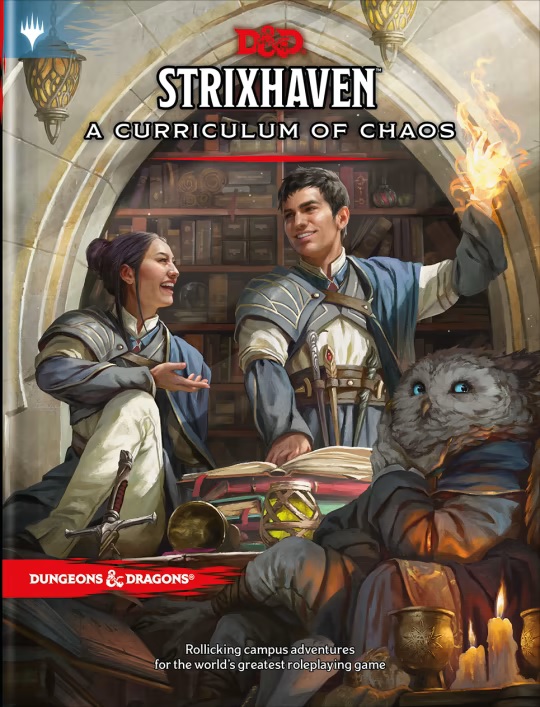
Strixhaven is one of the most interesting expansions of Magic the Gathering. The expansion is focused on the intricacies of the magic academy trope, and it also features remarkable card concepts. Now, Strixhaven: Curriculum of Chaos expands MTG’s Strixhaven magic school and integrates many adventuring concepts.
If you’re a big fan of magic academies, grading systems, and fantasy extracurricular activities, you won’t be disappointed with Strixhaven: Curriculum of Chaos. The book contains new spells, character options, and additional rules for adventure improvement. There’s also a new race called Owlin. The Owlin is great for roleplaying and enhancing a flexible character build, but it’s not too strong in combat.
The Strixhaven is a great book for D&D beginners and MTG fans. However, hardcore players and DMs might feel disappointed with the small amount of additional content. Usually, published D&D books have at least two races and dozens of class options with additional magic items. Another issue with the Strixhaven book is its printing inconsistency. Some pages have poor artwork detail, and other text sections are unclear.
Live to Tell the Tale: Combat Tactics for Player Characters
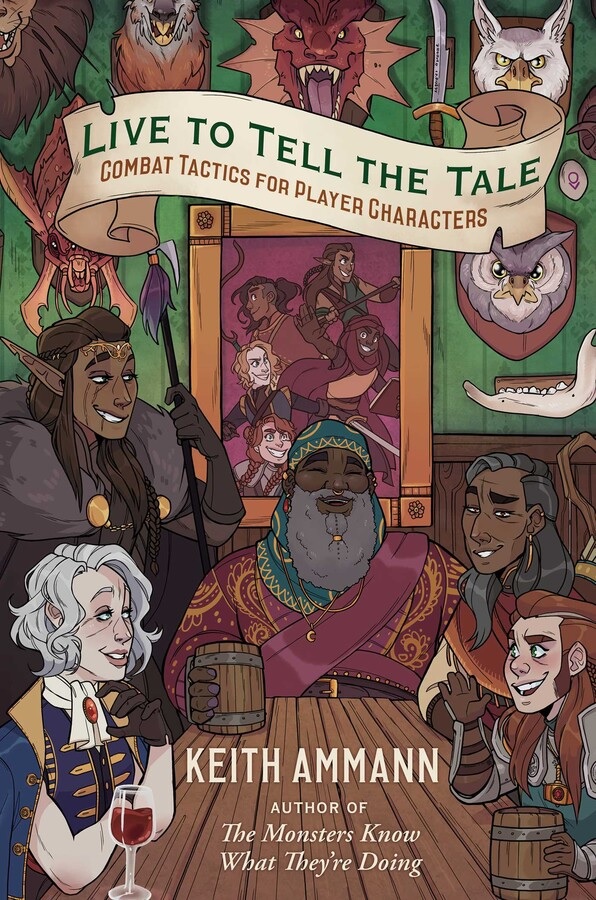
Have you always wanted to improve your capabilities on D&D combat? While reading the Player’s Handbook (PHB) can help, nothing beats the knowledge you can learn from a combat-dedicated book. One such book is Keith Ammann’s Live to Tell the Tale: Combat Tactics for Player Characters.
Live to Tell the Tale is the parallel book to Ammann’s The Monsters Know What They’re Doing. The latter book is meant for DMs, while the former is helpful for D&D players. Whether you’re a beginner or an experienced player, Live to Tell the Tale will help you become an excellent combat simulationist. The book covers all of the popular D&D combat tactics and offers additional efficiency tips. Some of the lessons that you can learn from the book are positioning, party synergy improvement, turn maximization, magic item priorities, and monster exploits.
While the book is generally helpful, it could’ve benefited from more angles or extra advisory options for non-combat characters. Another issue with the book is its direct support for min-maxing. Some players don’t like to min-max their way to a combat encounter. Dissatisfied players will end up looking for extra materials to support the book.
Tome of Alchemy for 5E
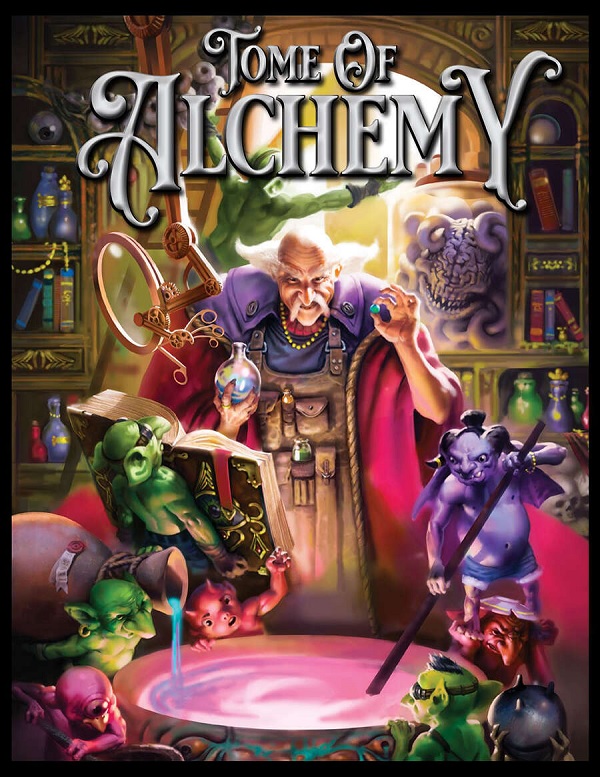
Crafting is an enjoyable activity in D&D. Through this activity, you can make strong potions and herbal concoctions. The crafting process is often simulated by dice rolls or a fine measure of roleplaying. One useful book that supports crafting is the Tome of Alchemy from Necromancer Games.
The Tome of Alchemy offers hundreds of craftable stuff ranging from potions, poisons, bombs, and strange elixirs. Aside from the book’s helpful concoctions, you can also get some powerful spells and experiments. DMs can also grab some adventure hooks related to alchemy. The hooks can improve a campaign and can be used for separate one-shots. Tomb of Alchemy’s improved crafting system will also increase player immersion and boost the simulation aspects of any adventure.
If you don’t like crunchy rules and mechanics, you might feel a little disappointed with the Tome of Alchemy. The additional rules can make crafting in a session too long, and the chance for failure is somehow high. You can just use a simple homebrew crafting system that can be downloaded freely at this rate.
The Ultimate RPG Character Backstory Guide
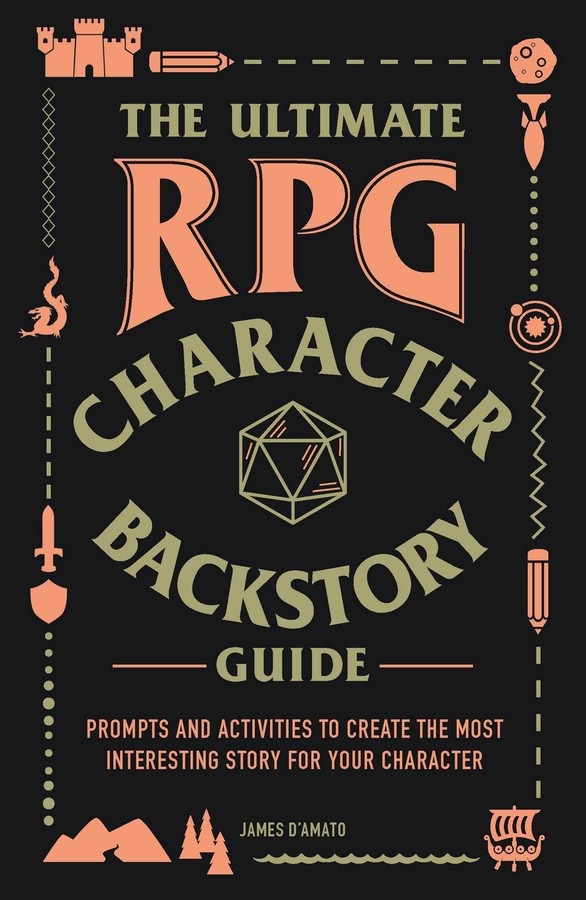
Do you need a simple book that can help you make an interesting character backstory? Well, you can take a look at the Ultimate RG Character Backstory Guide. This is a book focused on backstory generation with a rather different approach. Instead of offering a streamlined way of making backstories, the Ultimate RPG Character Backstory Guide prioritizes an open-ended approach through RPG character questions and statement tables.
Most of the questions included in the book are all about your character’s origin, habits, goals, mannerisms, and quirks. You can also generate a funny catchphrase with the help of the book.
Now, the Ultimate RPG Character Backstory Guide is not for everybody. The book has a semi-humorous tone and lots of character statements that don’t make sense. Some sections are also fillers designed to stretch the topic further. There are also some glaring spelling errors as if the book is published within a strict timetable. The Ultimate RPG Character Guide will only help you flesh out characters for fun, but eventually nothing more.
Deep Magic for D&D 5E
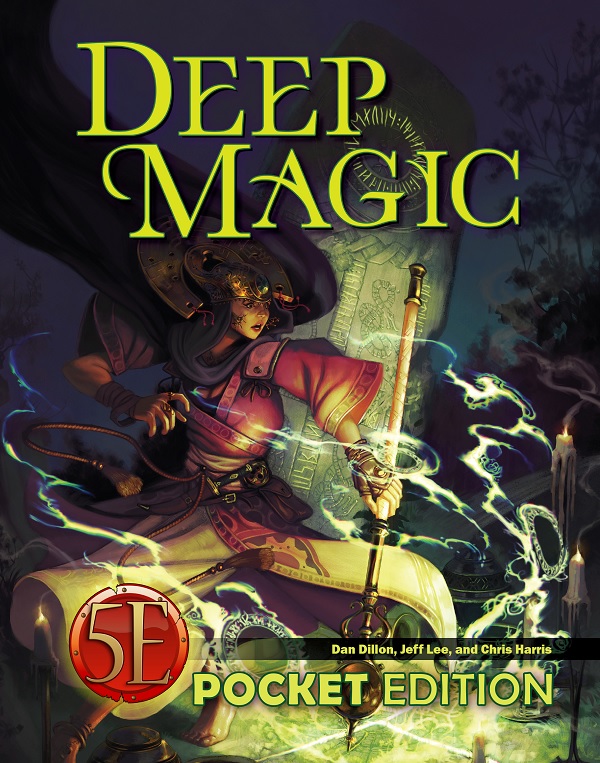
If you feel that D&D doesn’t have enough spells, you should get the Deep Magic pocket sourcebook from the popular Kobold Press. The sourcebook contains up to 700 spells categorized for all casting classes. Now, you can make a powerful spellcaster with exotic spells and extra arcane abilities.
Aside from being a great sourcebook for players, Deep Magic is also a boon for hardworking DMs. The spells will give DMs additional ideas for spell rewards, arcane encounters, domain power-shifting, and plot hook creation. Plus, Deep Magic offers extensive support for extradimensional summoning. If you love powerful familiars, now is the perfect time to grab this sourcebook!
A common workable issue of the Deep Magic sourcebook is balance scaling. Some spells are overpowered enough to destroy an encounter within a round or two. Other spells are weak for their spell slot requirements, causing a player to think that he or she probably wasted a chance. However, Deep Magic’s balance problems can be solved by minor tweaking. Another problem with the book is the confusing layout. You need to flip the pages a few times to get the spell information needed. You can jot down the important spell pages or rely on spell keywords and phrases to solve this problem.
The Compendium of Forgotten Secrets: Awakening
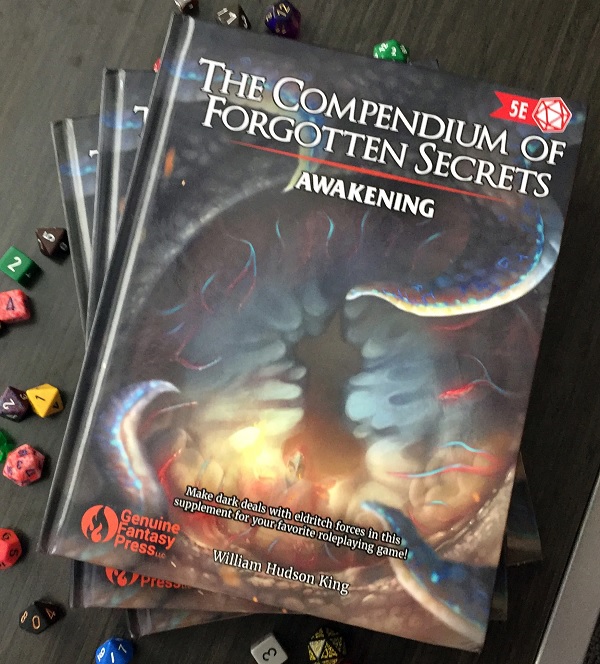
Adding a sourcebook to your D&D collection can be a difficult task. You have to sift through hundreds of materials across numerous online platforms. But if your budget is limited, you can just go for The Compendium of Forgotten Secrets: Awakening.
Featuring up to 80 well-balanced spells, the Compendium will truly benefit any spellcasting class. Aside from spells, the book shows its love for Warlocks by offering up to 100 invocations and additional Patrons. The Compendium doesn’t stop at spells and invocations. You can browse the book for exotic magic items, relics, and artifacts.
The Compendium of Forgotten Secrets has minor layout and printing issues. You might notice some unclear texts, stretched-out paragraphs, and uneven graphics. Some pages are also missing. Don’t worry – you can always contact the online store and ask for a product replacement.
250 Best Magic Items from Mage Gate
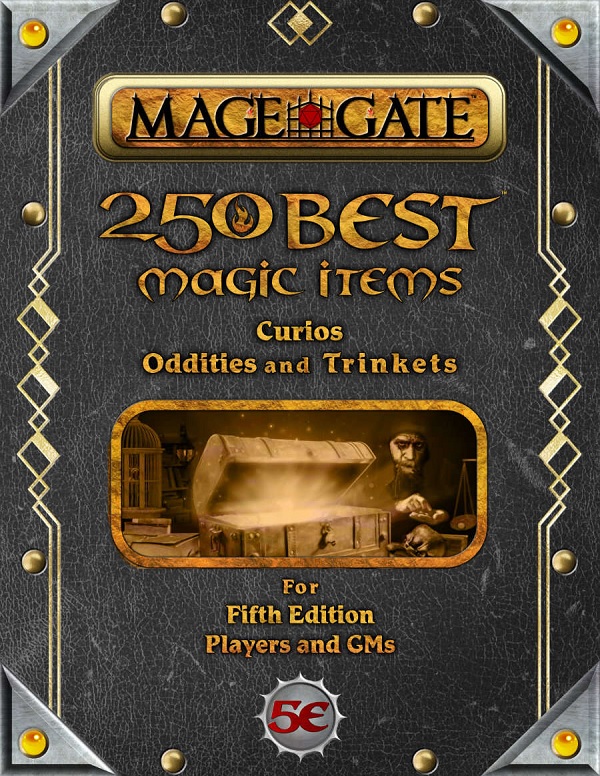
Most published D&D sourcebooks have a small number of official magic items and treasures. Even if you don’t need all items, you might end up looking for more. Instead of viewing multiple homebrew options, you should save time and grab a copy of The 250 Best Magic Items from Mage Gate.
The 250 Best Magic Items has dozens of magic items with variable categories. These categories are helpful in determining the right rewards for a character. Aside from magic items, the sourcebook contains funny trinkets worthy of any character’s shopping list. All of the items have reasonable prices that can be adjusted according to the campaign theme.
The 250 Best Magic Items sourcebook has minor issues related to printing. You might notice that some text sections and paragraphs are small or unclear. Also, the sourcebook’s greatest strength is also its slight weakness. With little prep time, the plethora of magic items can be overwhelming for players or DMs. The solution: don’t read the sourcebook in one sitting. Flip through the pages, get the items that you want, and save them for another day.
Other Hot RPG Character Questions About D&D
What are the best magic items for Level 1 characters?
Answer: Handing magic items at Level 1 can shatter the progression balance of any D&D group. To be on the safe side, Level 1 players should just receive +1 weapons and nothing more, even if it means not having your character’s favorite spell. If you’re the DM and you really intend to give magic items, just pick those options with specific daily limitations. Also, make sure that the starting items have the potential to grow or improve as characters gain new levels.
What are the best feats that every Level 1 character should have?
Answer: Feats are actually dependent on your chosen race and class. Some beneficial and multi-purpose feats are Alert, Great Weapon Master, Polearm Master, Resilient, and Mobile for starters. Just remember that all feats have specific conditions that must be fulfilled. You can’t get all possible feats at Level 1.
Is it okay to start a new game at Level 1 or Level 3?
Answer: It all depends on the DM’s discretion. Level 1 characters are just upstart adventurers trying to make it big in the world. Level 3 characters, on the other hand, have enough experience to branch out into subclasses. Starting at Level 1 will grant additional opportunities to earn wealth, favors, and loot, but starting at Level 3 will speed up the campaign’s progression.
What is the least popular character class?
Answer: Based on several communities and forums, the least popular D&D class is Druid, followed closely by Ranger and Paladin. The Druid isn’t too popular because of its limited spellcasting options and a build trajectory that depends too much on the subclass.
What is the most popular character or hero class?
Answer: Currently, the most popular hero character class in D&D is Barbarian. The Barbarian hero class is popular because of its raw damage output and survivability. The class also has excellent subclasses that can augment your character’s flexibility and combat strength.
Do all characters need to be strong in combat?
Answer: Not all characters should be strong in combat. However, all characters should be able to handle a degree of combat now and then. It’s actually a great thing that all D&D classes are capable of handling combat encounters if needed. You can check this link to see more DnD character ideas.
What is the best D&D sourcebook for making a flexible character?
Answer: There are dozens of official and non-official sourcebooks to choose from! But if you’re going to pick just one sourcebook, you can never go wrong with Xanathar’s Guide to Everything (XGE). This book contains many class options, subclasses, magic items, and new spells.
Conclusion
If you take the D&D character questions seriously, you can create a dynamic character with an interesting past and excellent combat skills. But making a character is just the beginning! You need to play the character to the best of your abilities while considering the suggestions of the DM.
What is your weirdest or most interesting character concept? Share the concept in the comments section below, and we’ll take a look at it!


